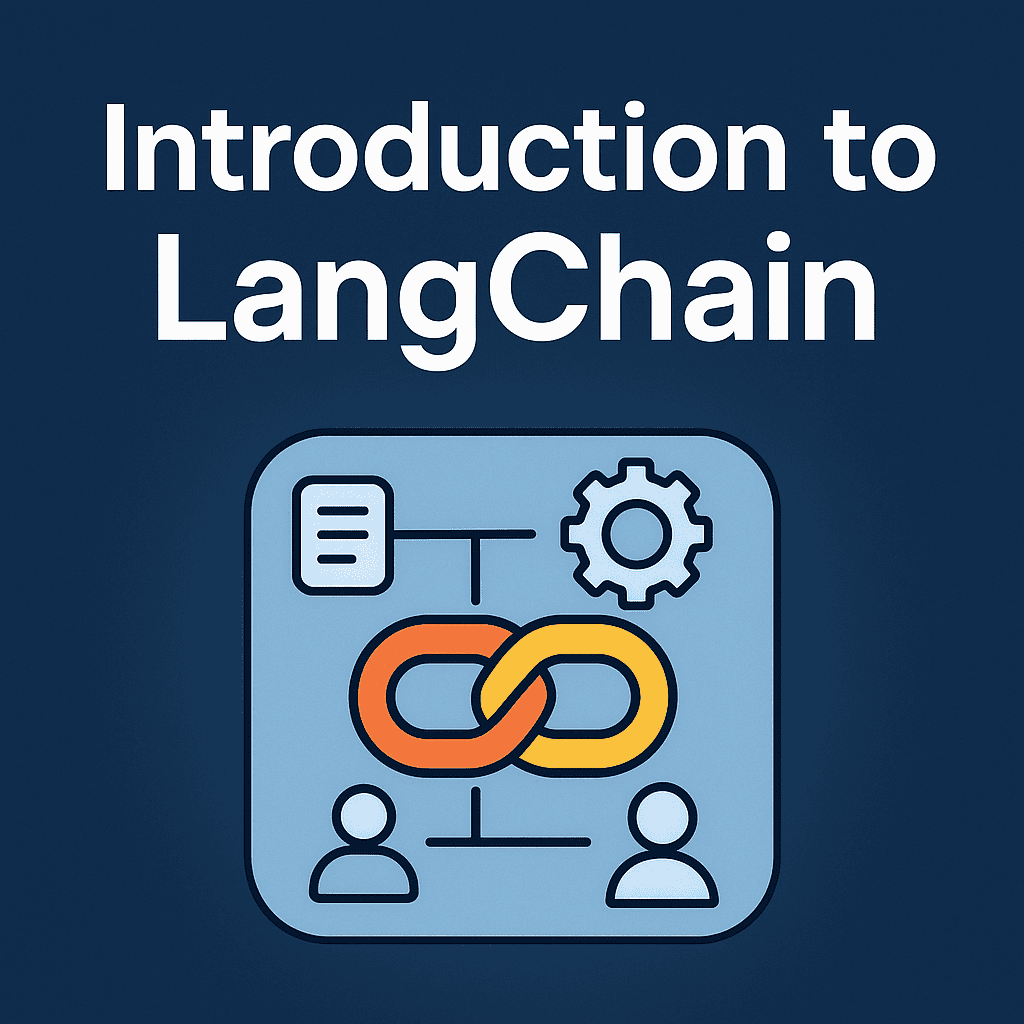
🌐 What is LangChain? A Beginner-Friendly Guide to LLM-Powered Apps
LangChain is quickly becoming the go-to framework for developers looking to build real-world applications using Large Language Models (LLMs). Whether you’re creating a chatbot, a document summarizer, or a smart assistant that fetches live data, LangChain helps you connect LLMs to the world around them—easily, efficiently, and scalably.
In this post, we break down what LangChain is, how it works, and why it’s perfect for developers just stepping into the world of LLMs.
🚀 What is LangChain?
LangChain is an open-source framework built to simplify LLM-powered app development. Instead of just chatting with a static LLM like ChatGPT, LangChain lets you build interactive, memory-aware apps that can search documents, call APIs, and perform multi-step logic.
Originally launched in October 2022 by Harrison Chase, LangChain now supports Python, JavaScript, and LangGraph—a new layer for stateful workflows.
🧩 Why Use LangChain?
LangChain unlocks capabilities such as:
- Access external data: LLMs can read your docs, query APIs, or interact with databases.
- Build smart workflows: Chain multiple steps together (e.g., “fetch > reason > respond”).
- Retain memory: Apps can remember prior user inputs or decisions.
- Add logic: Use agents that reason and decide what actions to take next.
🛠️ Key Components (With Examples)
🔗 1. External Data Access
Connect your LLM to:
- APIs (weather, finance, internal systems)
- PDFs, Google Docs, SQL databases
- Vector stores like Pinecone or Chroma for semantic search
Example: A customer support bot that answers based on your company’s private docs.
🧠 2. Prompt Management
Use PromptTemplates to build consistent LLM inputs.
from langchain.prompts import PromptTemplate
template = PromptTemplate.from_template(
"Explain {concept} to a 12-year-old."
)🗣️ 3. Memory for Conversations
Add memory so your app remembers previous messages.
from langchain.memory import ConversationBufferMemory🔄 4. Chains for Multi-Step Tasks
Chain multiple actions: input → search → filter → output.
from langchain.chains import LLMChainUse LCEL or SequentialChain to build logic.
🕹️ 5. Intelligent Agents
Agents make decisions based on tools and input.
from langchain.agents import initialize_agent📚 6. Retrieval-Augmented Generation (RAG)
Combine document search + LLMs for better answers.
Use case: Internal knowledge Q&A, support bots.
🧠 7. LangGraph: State Machines for LLMs
LangGraph turns your logic into a graph of states:
- Add branching
- Enable retries
- Build long-running workflows
🧪 8. LangSmith: Test and Debug
LangSmith helps you:
- Trace prompts and model responses
- Debug weak chains
- Optimize performance
📦 9. LangServe: Deploy Your LLM App as an API
Serve your LangChain app as a REST API.
pip install langserve🧠 Use Cases for LangChain
LangChain powers apps like:
- 📞 Chatbots
- 📖 Summarizers
- 🧑⚕️ Healthcare assistants
- 🧾 Code assistants
- 🗃️ Knowledge bots
- 💼 Workflow automators
⚡ Getting Started
Install LangChain:
pip install langchain openaiQuickstart:
from langchain.llms import OpenAI
from langchain.prompts import PromptTemplate
from langchain.chains import LLMChain
llm = OpenAI()
prompt = PromptTemplate.from_template("What is {topic}?")
chain = LLMChain(llm=llm, prompt=prompt)
print(chain.run("LangChain"))🔗 Learn More
✅ Final Thoughts
LangChain makes LLM development modular, powerful, and production-ready. Whether you’re a beginner or building enterprise tools, LangChain gives you the tools to go from prototype to product.
Have you built with LangChain? Share your ideas or apps in the comments or tag us at superml.dev!
Last updated: May 27, 2025
Enjoyed this post? Join our community for more insights and discussions!
👉 Share this article with your friends and colleagues 👉 Follow us on